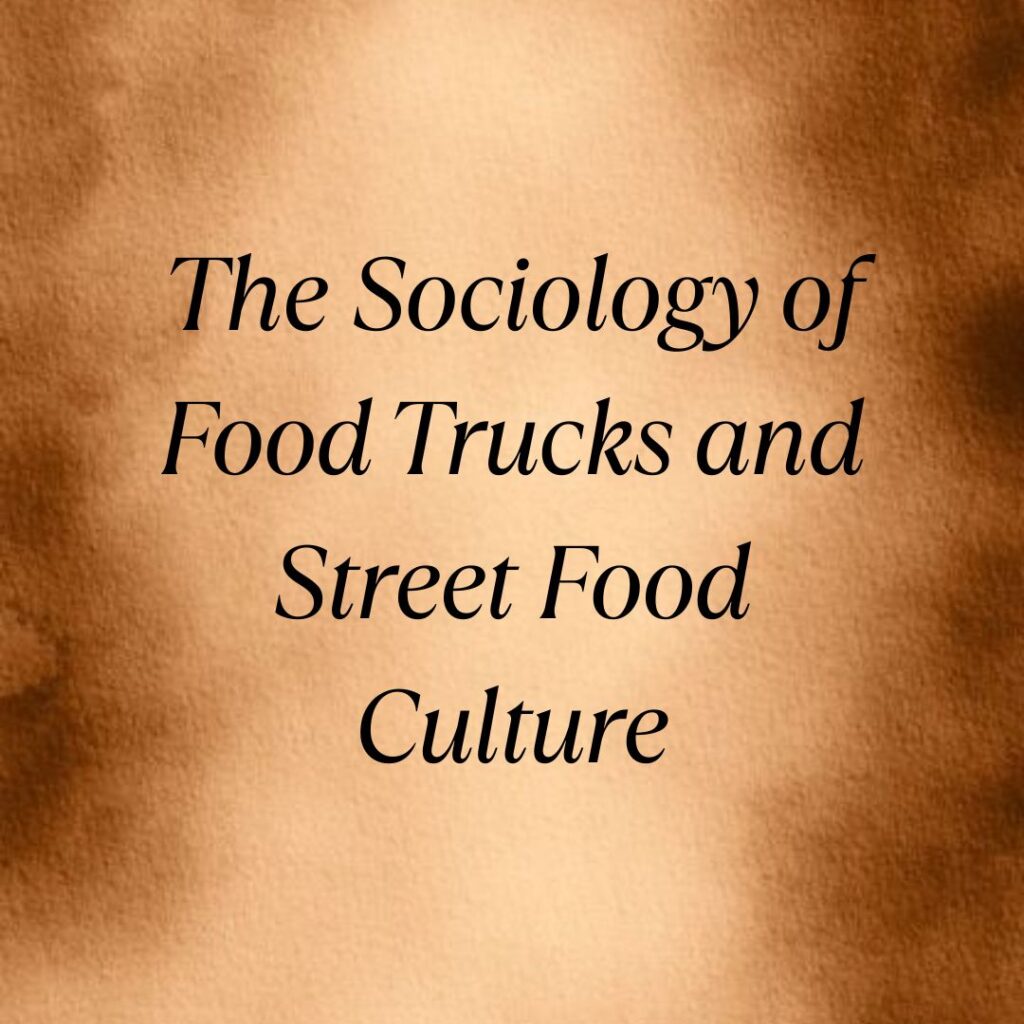In the bustling streets of cities worldwide, amidst the honking of horns and the chatter of pedestrians, a culinary revolution quietly thrives: the world of food trucks and street food. Beyond just satisfying hunger, these mobile kitchens and sidewalk stalls have become cultural icons, shaping urban landscapes and social interactions in profound ways. This article delves into the sociology behind food trucks and street food culture, exploring their rise, impact, and significance in contemporary society.
Origins and Evolution
Food trucks and street food have a long history dating back centuries, rooted in the vibrant markets and trade routes of ancient civilizations. From ancient Rome’s bread vendors to the noodle stalls of Tang Dynasty China, mobile food vendors have always catered to the masses, offering convenient, affordable meals.
Fast forward to the modern era, where food trucks emerged as a response to urbanization, economic shifts, and changing consumer preferences. In the 19th century, chuckwagons fed cowboys in the American West, while in bustling Asian cities, hawkers on bicycles sold noodles and snacks. The 20th century brought ice cream trucks and hot dog stands, laying the groundwork for today’s diverse food truck scene.
Cultural Phenomenon and Social Spaces
What sets food trucks apart from traditional restaurants is their mobility and adaptability. They can pivot quickly to meet changing tastes and trends, offering everything from gourmet burgers to vegan tacos, often reflecting the multicultural fabric of their surroundings. This flexibility not only caters to diverse palates but also fosters cultural exchange and appreciation.
Moreover, food trucks and street food markets serve as social hubs, fostering community bonds and enhancing urban social life. In cities like Portland, Oregon, food truck pods are gathering places where neighbors mingle over artisanal coffee and artisanal sandwiches. This communal aspect is crucial in an era where digital connectivity sometimes replaces face-to-face interaction.
Economic Drivers and Entrepreneurship
Beyond their cultural impact, food trucks are economic engines, especially for aspiring chefs and small business owners. Launching a food truck requires less capital than opening a restaurant, making it an attractive option for culinary entrepreneurs. This accessibility has democratized the food industry, allowing talented cooks to showcase their skills without the overhead costs of a traditional eatery.
In cities like New York and Los Angeles, food trucks have become launchpads for culinary stars, propelling chefs from obscurity to fame through social media buzz and foodie acclaim. The success of these mobile eateries underscores a broader trend towards niche markets and artisanal products, catering to consumers’ growing demand for unique dining experiences.
Regulatory Challenges and Urban Planning
Despite their popularity, food trucks often face regulatory hurdles that vary by city and region. Zoning laws, health codes, and permit fees can pose significant barriers to entry, limiting the growth of this dynamic industry. In some cases, established restaurants lobby against food trucks, citing unfair competition and concerns over sanitation.
Efforts to streamline regulations and create designated food truck zones are underway in many cities, recognizing the cultural and economic contributions of mobile vendors. These initiatives aim to balance public health concerns with the benefits of food truck diversity, promoting vibrant street food scenes that attract tourists and locals alike.
Global Perspectives and Culinary Innovation
Across the globe, street food embodies local traditions and regional flavors, from Bangkok’s aromatic pad Thai to Mexico City’s spicy tacos al pastor. UNESCO has even recognized certain street food cultures as Intangible Cultural Heritage, highlighting their role in preserving culinary traditions and promoting cultural diversity.
Innovations in mobile technology and social media have further fueled the food truck revolution, enabling vendors to reach a broader audience and adapt to consumer feedback in real-time. Platforms like Twitter and Instagram serve as virtual storefronts, enticing food enthusiasts with mouthwatering photos and real-time location updates.
Future Trends and Reflections
Looking ahead, the future of food trucks appears bright, driven by consumers’ desire for convenience, authenticity, and culinary adventure. As urban populations grow and dining habits evolve, food trucks will continue to play a pivotal role in shaping the gastronomic landscape of cities worldwide.
In conclusion, food trucks and street food culture are more than just a trend—they represent a fusion of culinary innovation, social interaction, and economic opportunity. By celebrating diversity and embracing creativity, these mobile eateries enrich urban life, turning sidewalks into dining destinations and transforming how we experience food in the modern age.
Whether you’re grabbing a gourmet sandwich from a local food truck or exploring a bustling night market abroad, the sociology of food trucks reminds us that food is not just sustenance—it’s a powerful force that connects us, transcending cultural boundaries and bringing communities together in delicious harmony.







